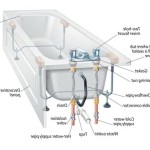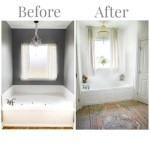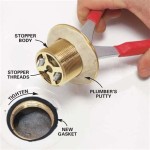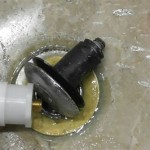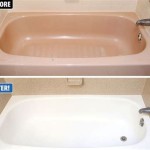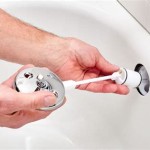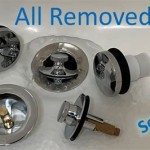Litter Box Placement: Considerations for Using a Bathtub
The placement of a cat's litter box is a critical factor in ensuring the cat's comfort and hygiene, as well as maintaining a clean and odor-free environment in the home. While traditional locations like laundry rooms or quiet corners are common, some cat owners consider placing the litter box inside a bathtub. This unconventional approach has its own set of advantages and disadvantages, primarily centered around containment, accessibility, and the overall usability of the bathroom space.
The choice of litter box location should always prioritize the cat's needs. Cats are meticulous animals, and a poorly placed or maintained litter box can lead to stress, behavioral issues like inappropriate elimination, and ultimately, a diminished quality of life for the feline companion. Therefore, thorough consideration of the potential benefits and drawbacks of using a bathtub for this purpose is essential.
Containment and Cleanliness
One of the primary reasons individuals consider placing a litter box in a bathtub is the potential for enhanced containment. Cats, particularly those who are enthusiastic diggers, can scatter litter far beyond the confines of a traditional litter box. The high sides of a bathtub can effectively prevent litter from being kicked onto the floor, minimizing the need for frequent sweeping and vacuuming. This can be especially beneficial for individuals with mobility issues or those who simply prefer a cleaner living space.
The smooth, non-porous surface of a bathtub also makes it relatively easy to clean. Spills and accidents can be quickly wiped up, and the entire tub can be thoroughly disinfected as needed. This can be particularly advantageous for multi-cat households or situations where a cat experiences occasional urinary issues. The ease of cleaning contributes to a more hygienic environment for both the cat and the human occupants of the home.
However, the effectiveness of containment is highly dependent on the cat's behavior. Some cats may still manage to fling litter over the sides of the bathtub, especially if the tub is not particularly deep or if the cat is a particularly avid digger. In such cases, additional measures, such as placing a mat around the tub or using a high-sided litter box within the tub, may be necessary to achieve optimal containment. Furthermore, the accumulation of dust and litter within the bathtub itself still requires regular maintenance to prevent the build-up of odors and bacteria.
Accessibility and Convenience
The accessibility of the litter box is another important consideration. While a bathtub offers a degree of enclosure, it can also present a challenge for cats, especially older cats or those with mobility issues. The high sides of the tub can be difficult for them to navigate, potentially leading to accidents or a reluctance to use the litter box. This is particularly true for cats with arthritis or other joint problems. Ramps or steps may be necessary to ensure that the cat can easily enter and exit the bathtub.
From a human perspective, placing the litter box in the bathtub can also impact the usability of the bathroom. Depending on the size of the bathroom and the frequency of bathing, the presence of the litter box can make it inconvenient or even impossible to use the bathtub for its intended purpose. This is particularly problematic for households with only one bathroom. Furthermore, the visual impact of a litter box in the bathtub may be aesthetically unappealing to some individuals.
The convenience factor also extends to the process of cleaning and maintaining the litter box. While cleaning the bathtub itself is relatively straightforward, reaching into the tub to scoop the litter can be awkward and uncomfortable. This is particularly true if the tub is deep or if the individual has back problems. Using a long-handled scoop can help to alleviate this issue, but it may not be a perfect solution.
Odor Control and Ventilation
Odor control is a crucial aspect of litter box management. The placement of the litter box can significantly impact the level of odor within a home. Bathrooms are often equipped with ventilation fans, which can help to mitigate odors. However, the effectiveness of the ventilation system is highly dependent on its quality and usage. If the ventilation fan is not powerful enough or if it is not used regularly, odors can still linger in the bathroom and potentially spread to other areas of the home.
The type of litter used also plays a significant role in odor control. Clumping clay litter, while widely available and relatively inexpensive, can be prone to producing strong odors, especially if it is not scooped frequently. Alternative litter options, such as those made from wood, paper, or silica gel, may offer better odor control. However, these alternatives can also be more expensive.
Regular cleaning and maintenance are essential for minimizing odors, regardless of the litter type or ventilation system. Scooping the litter box at least once a day, and preferably twice a day, is crucial for preventing the build-up of ammonia and other odor-causing compounds. Periodically cleaning the entire bathtub with a disinfectant solution can also help to eliminate lingering odors and bacteria. Additionally, ensuring that the litter box is properly placed away from drafts can help to prevent odors from spreading throughout the home.
Furthermore, the humidity levels within a bathroom can exacerbate odor issues. Moisture can promote the growth of bacteria and mold, which can contribute to unpleasant smells. Ensuring that the bathroom is adequately ventilated and that any leaks or sources of moisture are promptly addressed can help to minimize these issues.
In conclusion, the decision to place a litter box in a bathtub requires careful consideration of various factors, including containment, accessibility, convenience, and odor control. While the bathtub offers potential benefits in terms of containment and ease of cleaning, it can also present challenges related to accessibility and usability of the bathroom space. Ultimately, the best location for a litter box is one that meets the needs of both the cat and the human occupants of the home, promoting a clean, comfortable, and harmonious living environment.

Litter Box In Bathtub Hot

Semi Enclosed Cat Litter Box Sandbox Large Splash Proof Raised Fence Breathable Deodorizing

8 Tips To Stop Your Cat From In The Bathtub Modkat

The 5 Best Cat Litter Boxes Of 2025 Reviews By Wirecutter

The 3 Best Automatic Cat Litter Boxes Of 2025 Reviews By Wirecutter
Aol Reviewed We Tried The 700 Litter Box So You Didn T Have To

How To Give Your Cat A Bath Step By Guide Bathing

World S Best Unscented Clumping Corn Cat Litter

The Best Litter Box Cleaning Routine Clean My Space

Petsafe Scoopfree Automatic Self Cleaning Cat Litter Box Includes Di Petsense
Related Posts

